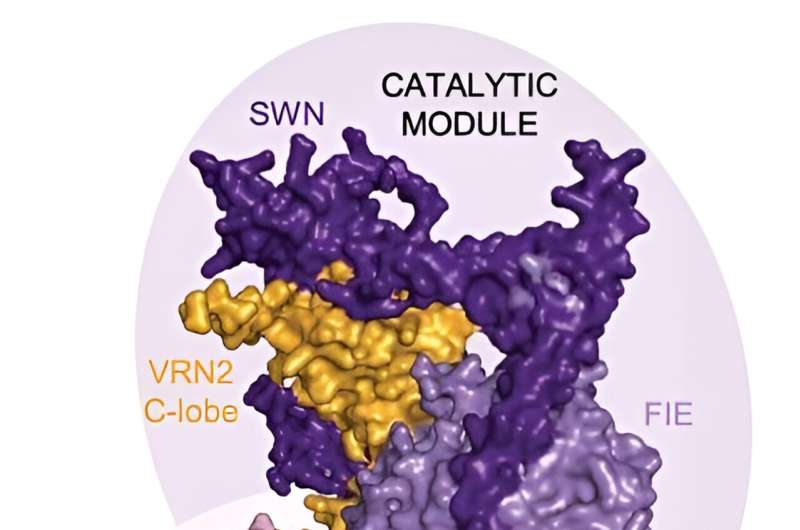This article has been reviewed according to Science X's editorial process and policies. Editors have highlighted the following attributes while ensuring the content's credibility:
fact-checked
peer-reviewed publication
trusted source
proofread
The intricate mechanisms of epigenetic silencing

Epigenetic silencing, which involves the suppression of gene activity, is a fascinating and increasingly influential branch of biological sciences. It allows cells to remember and maintain specific gene expression patterns throughout development and respond to environmental cues such as winter cold in the case of vernalization in plants.
The silencing activity, conserved in both animals and plants, is crucial for proper development and cellular differentiation. In humans, abnormalities in PRC2 (Polycomb Repressive Complex 2)—a protein complex that silences genes—can lead to various diseases, including cancer, neurodegenerative disorders, and developmental defects.
A collaboration between the group of Professor Caroline Dean at the John Innes Center and the group of Dr. Mariann Bienz at the MRC Laboratory of Molecular Biology, Cambridge, has shed new light on this area of research.
The team investigated the roles of two Arabidopsis thaliana proteins (VIN3 and VRN5) involved in PRC2-mediated epigenetic silencing of the floral repressor gene FLC during vernalization. They show they are accessory proteins for PRC2-mediated epigenetic silencing, helping to trigger the epigenetic switch. They also show that these proteins have many targets in the Arabidopsis genome.
The team used their expertise in protein interaction and structure analysis to characterize the properties of these proteins and combined this with plant experiments to investigate the functional context of these findings. The research, which is published in the journal Genes & Development under the title "Distinct accessory roles of ArabidopsisVEL proteins in Polycomb silencing", uncovers the distinct roles of the two proteins in conferring PRC2-mediated epigenetic silencing of FLC and other genes.
The team are now further investigating the distinct roles of VIN3 and VRN5 that they started to uncover here to understand how they modulate PRC2 function in epigenetic silencing.
More information: Elsa Franco-Echevarría et al, Distinct accessory roles of ArabidopsisVEL proteins in Polycomb silencing, Genes & Development (2023). DOI: 10.1101/gad.350814.123
Journal information: Genes & Development
Provided by John Innes Centre




















